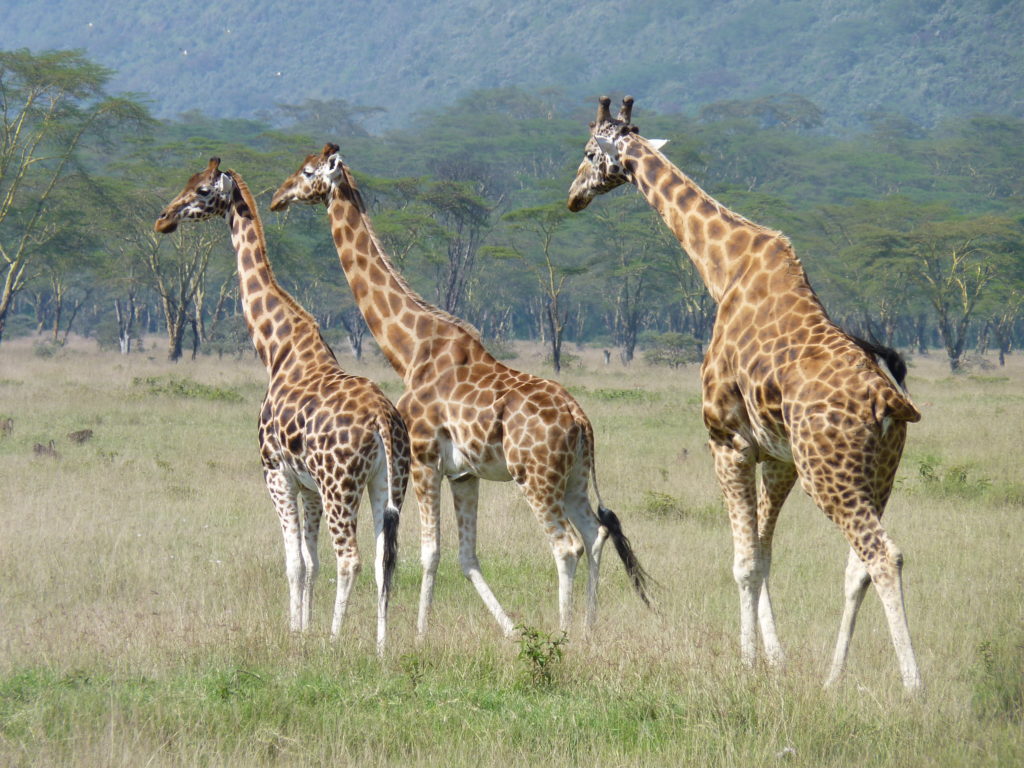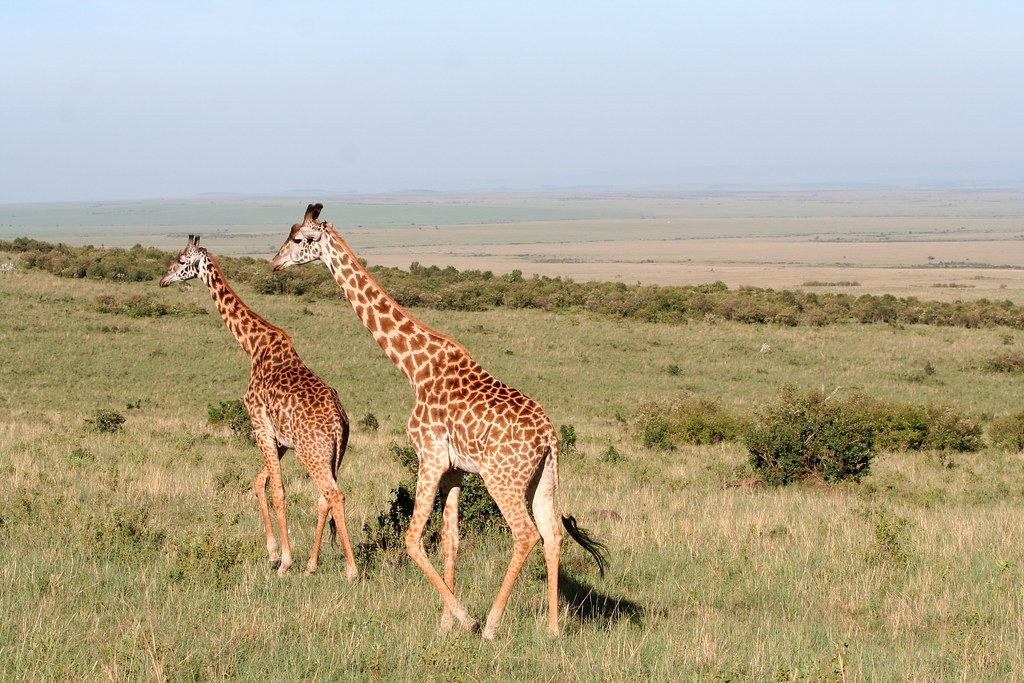Written by Andreas Wilson-Spath
Will giraffes survive humanity? They are as iconic as lions, rhinos and elephants, and their long-term existence in the wild is under a similar threat. However, the world’s tallest animals get much less public attention or protection than these other mammals.
Giraffes are in decline in many parts of Africa as a result of human-caused habitat loss, but what many people don’t know is that the species is also being driven towards extinction by two types of hunters: those who are so poor they kill for food, and those who are so rich they kill for so-called sport.
According to the International Union for Conservation of Nature (IUCN), giraffe numbers have dropped precipitously in the past three decades, plummeting by nearly 40%, from about 157,000 in 1985 to about 97,500 in 2015, of which only an estimated 68,000 are mature individuals.
Francois Deacon of South Africa’s University of the Free State said, “The threat of [giraffe extinction]is a reality in various parts of Africa. In 30 years, you will probably not see giraffes in the rest of Africa. That is how quickly things could change. You will see them in captivity in southern Africa…but in the rest of Africa, you will not see giraffe.”

Three free-ranging giraffe. According to some estimates, within 30 years there could be no more wild giraffes left in Africa. Image credit Kim Bartlett – Animal People, Inc.
The IUCN recognizes nine distinct giraffe subspecies in fragmented populations across Africa, some of which appear to be stable while others are in decline. Its famous Red List of threatened species currently classifies two subspecies as “critically endangered” (the same status as the black rhino and the eastern lowland gorilla), one as “endangered” and the species as a whole as “vulnerable.”
David Kabambo, executive director of the organization Peace for Conservation in Tanzania, has interviewed wildlife rangers and retired poachers who shared their accounts of giraffes being killed for the bush meat trade.
Kabambo cites game wardens who have told him that the giraffe is favored by poachers, “because it has a lot of meat on the carcass. Meat from one giraffe can be equal to the meat you get from four elands [an antelope species].”
There is an even more sinister aspect to the local trade in giraffe “products.” Kabambo says that “about 10 years ago, herbal medicine practitioners in Tanzania started touting giraffe bone marrow and brains as a way to protect people from, or even cure, HIV/Aids.” He believes that this has driven up prices for giraffe parts and has made poaching more lucrative, with heads and bones fetching the equivalent to up to 140 United States dollars each at local markets.
According to Christian Kiffner of The School for Field Studies, who has surveyed bush meat consumption patterns in Tanzania’s Tarangire-Manyara ecosystem, “giraffe poaching for meat is still happening in this area.”
Giraffes are also being killed by hunters who have no interest in eating their meat. According to research by Humane Society International (HSI), nearly 40,000 giraffe products derived from at least 3,751 individual animals were imported to the United States between 2006 and 2015. South Africa was the biggest export country during this period by far. As many as 95% of all individual giraffes imported to the US were killed by trophy hunters, and more than 60% of those came from South Africa.
Given the species’ vulnerable status, the scale of commercial giraffe trophy hunting is astonishing and deeply concerning.

Giraffes in Kenya’s Maasai Mara. Image credit Amy the Nurse, CC BY-SA 3.0.
Last year, an undercover HSI investigation revealed a widespread and unregulated market in more than 50 US locations offering everything from giraffe-bone pistol grips and knife handles to giraffe skin jackets, rugs, pillow cases, boots, duffel bags and bible covers. They also discovered that at least two of these sellers of giraffe products have previous convictions for trafficking in rhino horn.
Motivated by the species’ declining numbers and its vulnerability to overexploitation by hunters, HSI, together with other conservation organisations, petitioned the US Fish and Wildlife Service in 2017 to list the giraffe as endangered under the US Endangered Species Act. In the absence of a response, the petitioners have sued the US government for its failure to help protect giraffes in the wild.
The global trade in giraffe trophies and their parts continues unabated, because the species is not protected under the Convention on International Trade in Endangered Species of Wild Fauna and Flora (CITES).
During the next major CITES meeting, which takes place in Sri Lanka in May and June, several African countries, including Kenya, Chad, Senegal, Niger and Mali have proposed to have giraffes included in Appendix II of CITES, which would afford the species some protection by instituting limited control over trade. While this measure would not ban international trade outright, it would put in place some safeguards to monitor it, ensuring that trade is not detrimental to the survival of the species and that all traded giraffe parts were legally acquired (not derived from poached giraffes).
Sadly, this initiative is likely to be opposed by the big giraffe exporters, led by South Africa, who are concerned about the threat to a profitable revenue stream.

A young captive giraffe. Image credit Lee, CC BY-SA 3.0.
Activists like Kabambo know that strong legal interventions combined with efforts to lift local communities out of poverty result in positive impacts for both human and giraffe populations. Between 2016 and 2018, Kabambo and his colleagues have managed to convince 30 illegal hunters to surrender their snares and guns, turning them from poachers into conservationists.
Kiffner advocates a holistic strategy to counter poaching, which would include greater law enforcement presence to raise the odds of poachers getting caught and make bush meat more expensive, education programs to change people’s attitudes about bush meat consumption, and the creation of alternative job opportunities. “Almost all poachers I have interviewed said they’d stop poaching if they had alternative means of income.”
Featured image: a giraffe looks at the camera in Kenya’s Maasai Mara. Will we be able to save this vulnerable species from human threats? Image credit Wolf Gordon Clifton / Animal People, Inc.





